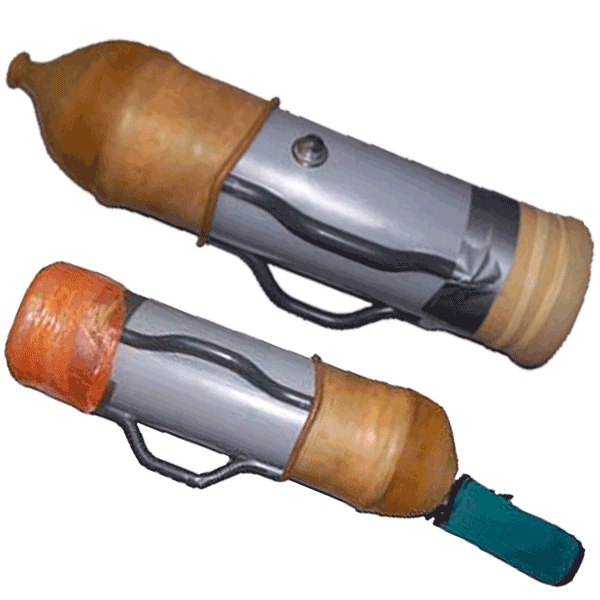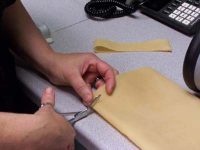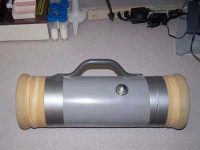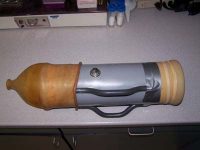Putting together an INRA (French) AV
(the Equine-Reproduction.com way)
At Equine-Reproduction.com we use a variety of artificial vaginas (“AV’s”), but the one that we particularly favour and use the most is the INRA (French model) AV from IMV. We have used this AV to collect all sizes of stallions from full-sized warmblood stallions to Welsh ponies! We have modified the setup slightly from that which has been suggested by others, and find that these modifications make the AV even more practical and easy to use.
We have not infrequently come across people who have had a difficult time putting together the INRA AV (and some other AV’s as well), and present the entire process here in detail. Each of the images is linked to a larger image in the event that more detail is required. For those who are experiencing difficulty putting together a Colorado model AV, the process will be essentially the same for both AV’s. The Colorado AV however lacks the latex “hood” that provides additional glans stimulation which is extremely beneficial when collecting some stallions – another advantage of the INRA AV.
Equipment required to set up the AV:
- AV Casing
- Thicker latex liner (you do not need the thin latex liner that comes with the AV using this technique) – comes with the AV
- 3 latex or rubber bands (can be cut from the thick latex liner, which is too long for the AV)
- Duct tape
- Latex hood – comes with the AV
- Disposable plastic liner
- “Playtex” brand open-bottom baby bottle
- Disposable bottle liners for the Playtex bottle
- Semen gel filters
- Mineral oil (you should only use this as a lubricant if you are using a disposable plastic liner – do not use on latex).
- Rectal sleeve
- Neoprene hot beverage cover
- Insulated hood (optional for colder climates – not shown in this image)
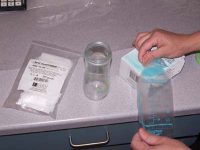




Place a disposable bottle liner in a “Playtex” bottle. We prefer the “Playtex” brand of bottle as it has no bottom to it, making it easier to determine if a low-volume stallion has ejaculated or not. A gel filter can be placed in the bottle and folded back over the top of the bottle. The disposable plastic AV liner is then fed through the bottle lid, folded back and trapped in the threads of the bottle by screwing the top on. This secures all of the parts together.



The AV is filled with hot water to give a final stabilized inside temperature between 45° and 54°Celsius (113° and 130°F). The actual desired temperature will be stallion-dependent. You will notice that we have an attachment on the hose from the sink that allows us to fill the AV more easily. We have removed the sprayer unit from the end of the hose and attached a smaller nozzle that will fit into the opening of the AV. We have also placed an on/off valve in the hose, which again makes it easier. You should release extra water to make the AV tight enough to provide stimulation for the stallion, but no too tight. Water is removed by placing the arm into the AV (inside the rectal sleeve), forcing the desired amount of water out. Replace the cap on the AV before removing your arm.
© 2005 Equine-Reproduction.com, LLC
Use of article permitted only upon receipt of required permission and with necessary accreditation.
Please contact us for further details of article use requirements.
Other conditions may apply.

